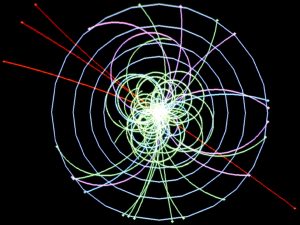White blood cells are a fundamental part of our body’s invulnerable resistances, helping it battle off germs that reason safe ailment, malignant growth and different sicknesses.
Scientists at Cincinnati Children’s Hospital Medical Center who drove the examination state their investigations show the interpretation factor activator protein 1, or AP-1, is basic to making way for microbiological forms in the core of early youthful T cells that enable the cells to shape accurately.
For T cells to enact and develop, the researchers state AP-1 must assist open with increasing chromatin – the curving structure of DNA that breezes around and consolidates itself in the cell core to control the cell. This animates a course of hereditary and atomic projects that collaborate to shape the cells. In tests where the researchers restrained AP-1 in early CD4 T cells, the chromatin didn’t open as it should and the T cells didn’t shape or capacity accurately.
What makes the discovery noteworthy is the AP-1 interpretation factor aggregates and impacts sub-atomic procedures at locales called hazard loci. Hazard loci are areas on the chromatin that are inclined to hereditary transformation and connected to different insusceptible infections, for example, incendiary inside malady, sensitivities or the neurodegenerative condition numerous sclerosis.
“Our discoveries enable us to direct new examinations into what’s going on molecularly and robotically at these hazard loci when the transformations are available and when they are not,” said Artem Barski, PhD, lead study specialist and researcher in the divisions of Allergy and Immunology and Human Genetics. “We will probably utilize this robotic information to inevitably create defensive immunizations, against malignancy safe treatments or lessen pathologic insusceptible reactions like asthma, sensitivities, and autoimmunity.”
Mixing Biology and Computers
The examination includes a multidisciplinary joint effort of various groups, incorporating researchers in the Center for Autoimmune Genomics and Etiology and the division of Biomedical Informatics and Genetics.
Joining diverse natural and computational strategies for examination, the exploration group had the option to profile the availability of chromatin to sub-atomic renovating during the beginning periods of CD4 T cell initiation.
Joining the trial and computational examination uncovered AP-1 official to DNA during the beginning times of CD4 T cell actuation. The analysts show when AP-1 binds to certain chromatin areas, it does as such related to its atomic accomplice, NFAT1 (atomic factor of initiated T cells). The analysts said before studies have concentrated on hereditary interruption of individual individuals AP-1 family proteins, of which there are eighteen. In the ebb and flow study be that as it may, the specialists said they extensively obstructed the whole AP-1 group of proteins in human innocent T cells.
At the point when study creators repressed AP-1, they said it counteracted chromatin changes that typically happen in the phone core and the T neglected to initiate. Presently Barski and his associates are attempting to see whether the nonattendance of AP-1 adds to individuals procuring a safe malady when AP-1 can’t tie with transformed loci. Barski says the researchers need to utilize new data from their future analyses to search for new, earth-shattering treatments that could change the result for patients.




Be First to Comment